Updated June 13th, 2024
From Butch Cassidy and the Sundance Kid to rodeos that draw ten thousand spectators, people have long been enamored with the cowboy culture.
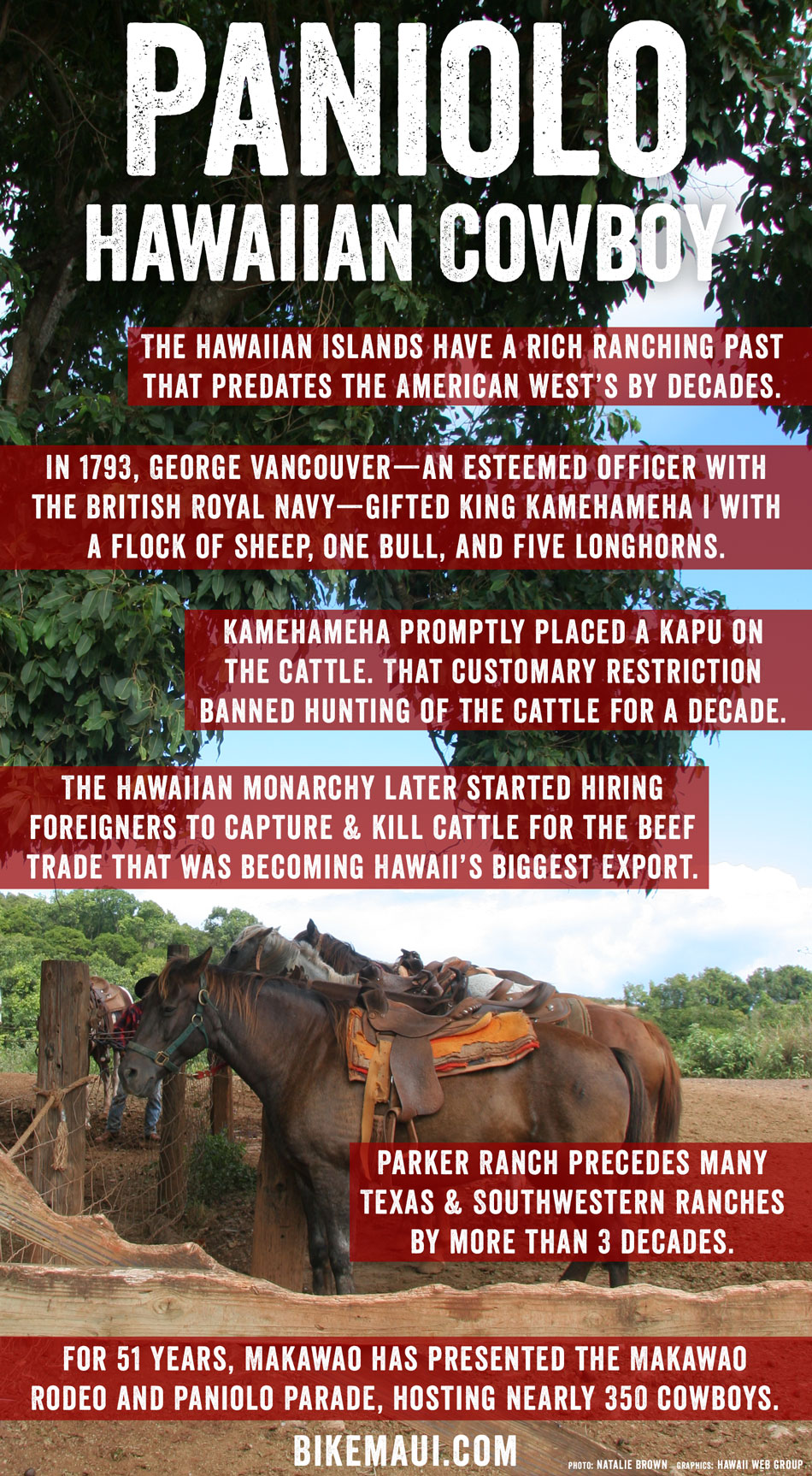
And while Hawaii rarely brings to mind the cowboy country we’ve come to know from films and books, the islands have a rich ranching past that predates the American West’s by decades.
To glean an appreciation for Hawaii’s cowboy culture, one must circle back to the islands’ immersion with both the east and west.
Prior to Western contact, the grasslands of Hawaii were devoid of the cattle, horses, and axis deer one is prone to see today on, say, the slopes of Haleakala or the rolling hills of the Big Island’s Waimea. After all, the Hawaiian Islands were and are the most isolated archipelago in the world; flora and fauna on these sunny coasts were restricted to what ancient Polynesians brought to shore aboard their boats.
That landscape was forever reshaped ten years after Captain James Cook first landed in the “Sandwich Islands.”
In 1793, George Vancouver—an esteemed officer with the British Royal Navy—gifted King Kamehameha I with a flock of sheep, one bull, and five longhorns.
Kamehameha—the first chief to unite the eight disparate islands into the Kingdom of Hawaii—accepted the gift, even carrying some to shore on his own canoe, whereupon he promptly placed a kapu on the cattle. That customary restriction banned hunting cattle for a decade. Liberated, the longhorns took to the lava fields and forests—and proceeded to flourish.
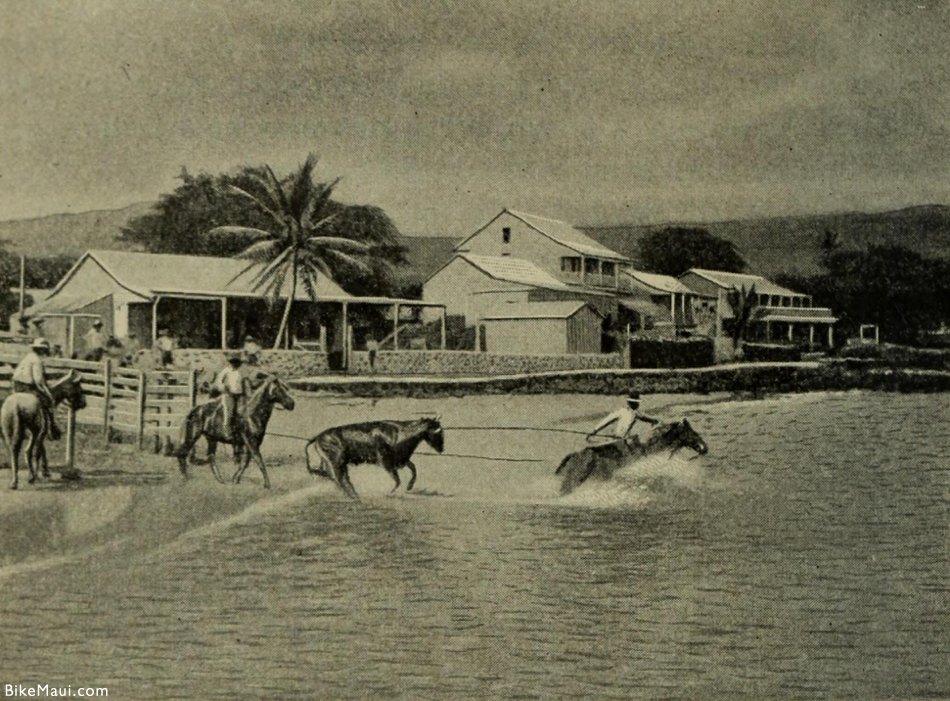
By the time nineteen-year-old John Palmer Parker jumped ship and arrived in the islands, the progeny of Vancouver’s cattle had multiplied into the thousands. The Massachusetts native caught the attention of the king, who entrusted Parker with tending to his fishponds. After braving the seas once again to travel to China during the War of 1812, Parker returned with an ultramodern American musket, which prompted the venerated king to permit him to shoot the cattle that, now feral, roamed through villages and devastated much of the local agriculture.
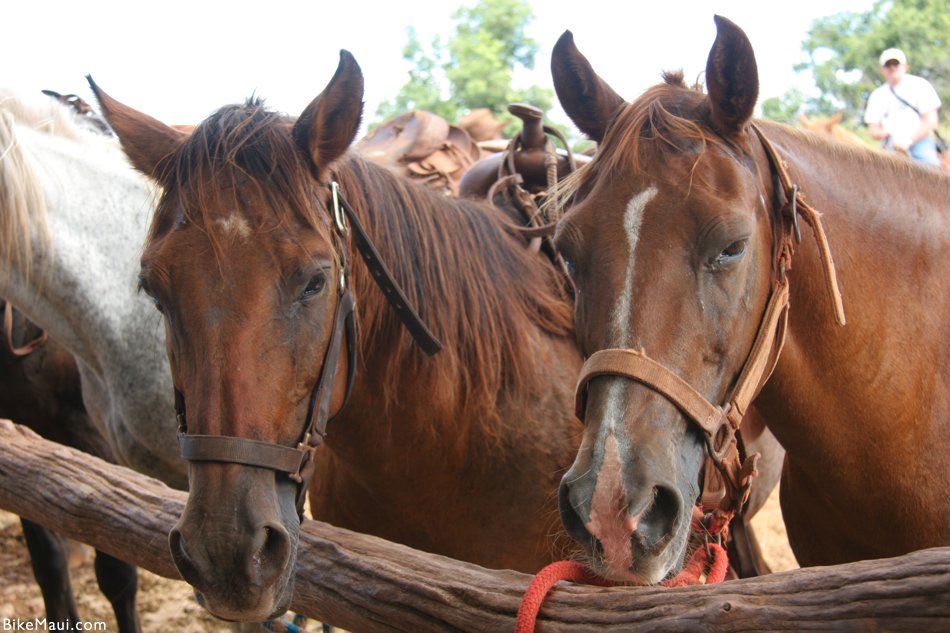
Removing that kapu translated into a rewriting of Hawaii’s future.
The king began allowing limited hunting, and, shortly after his death in 1819, the Hawaiian monarchy started hiring foreigners, otherwise known as “bullock hunters,” to pursue, ambush, and shoot the cattle to feed the burgeoning beef trade that was quickly replacing sandalwood as Hawaii’s biggest and most profitable export. Amid all of this, Parker married Kamehameha’s granddaughter Kipikane and was granted 640 acres of land on the Big Island. Today, that land comprises the start of Parker Ranch—the largest ranch in Hawaii and one of the oldest in the United States, preceding many Texas and Southwestern ranches by more than three decades.
With the increased demand for cattle products—thanks in part to the Gold Rush, the whaling industry, and new plantation laborers—came a heightened demand for ranch hands, and in 1832, King Kamehameha III sent one of his chiefs to Alta California to enlist cowboys who could aid in corralling the wild cows and teach Hawaiians horse-handling skills. The chief returned from what was then Mexico with three vaqueros (Spanish for cowboys) and the culture of paniolo—a twist on the español the vaquero spoke—was born.

“Unlike the bullock hunters,” Samir S. Patel writes in “Ballad of the Paniolo,” “they (the vaqueros) came on horseback and didn’t shoot cattle; the blasts scared off other cows and bullet holes decreased the value of hides.” Instead, the vaqueros “lassoed ‘em, hamstrung ‘em, and finished the job later. If the first bullock hunters provided the genealogical roots of many paniolo, their skills, and style came from vaqueros.”
“But where the Clint Eastwood cowboy is all piss and pistol,” Hawaii-raised journalist Constance Hale writes, “the Hawaiian paniolo is possessed of a gentle soul, a lovely language, and a music that is more soft-and-sweet than achy-breaky. The paniolo knows his flower species as well as his cattle breeds. The paniolo weaves blossoms into leis which he then wraps around his hat. He teaches his horses to swim in the ocean and to pick their way through sharp fields of lava.”
Sound unique? Indeed: Hawaii’s cowboy culture was impacted by several factors.
From the vaqueros Hawaiians received brightly-colored ponchos, long spurs, bandanas, braided lariats, floppy, wide-brimmed hats, and Spanish practices; these were entwined with their Hawaiian roots and the European, Asian, and Australian influences brought with Hawaii’s pools of immigrants. “I think it’s one of the best examples of ethnogenesis,” Peter Mills—an archeologist at the University of Hawaii, Hilo—says of the paniolo tradition, citing it as evidence of new, distinct ethnicities that emerge within larger cultures.
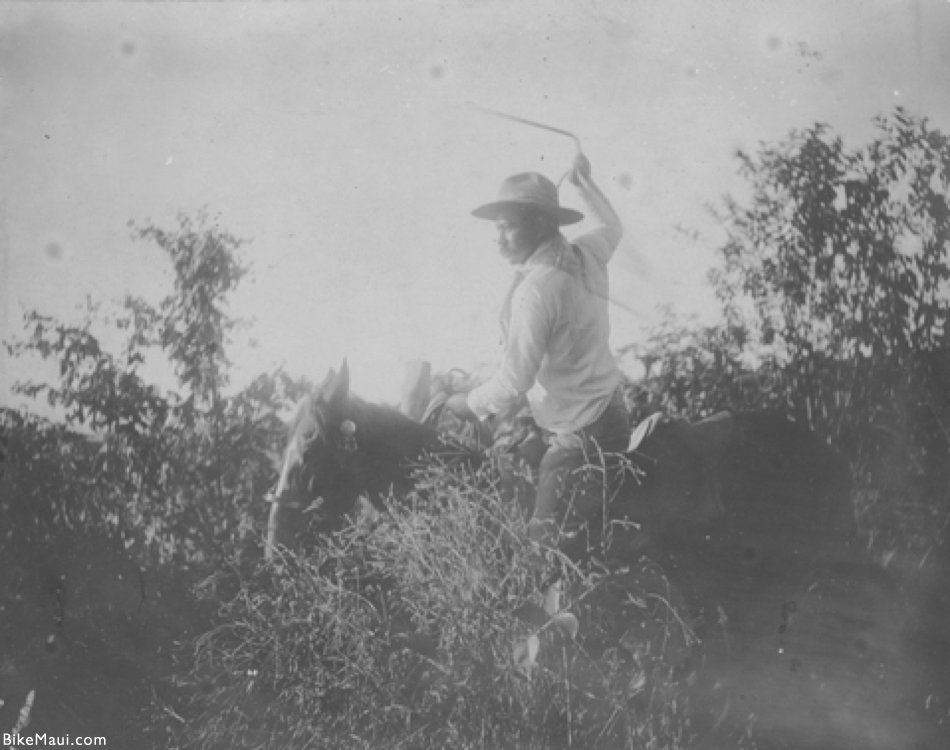
Mechanization—including the institution of tractors, hay balers, and post hole diggers—moderated the need for paniolo on cattle ranches throughout the Aloha State, but Hawaii’s original cowboy culture continues to thrive today, particularly on the Big Island and Maui.
On the latter, one simply has to meander upcountry to get a taste of it. Weekly line dances are offered in Pukalani. Makawao’s Stopwatch Sportsbar & Grill possesses all the rough and tumble one readily associates with taverns of the Wild West. Grandma’s Coffeehouse in Kula serves up plantation-grown joe to farmers heading out to the working cattle ranches in Ulupalakua and Kaupo. Western facades, relics of ranching, and a museum that exhibits photographs of paniolo in action are just a few of Makawao’s biggest draws. And the small, often-sodden settlement has, for 51 years, presented the much-loved Makawao Rodeo and Paniolo Parade, complete with horse stick races, a bull bash, and nearly 350 cowboys from around the globe.
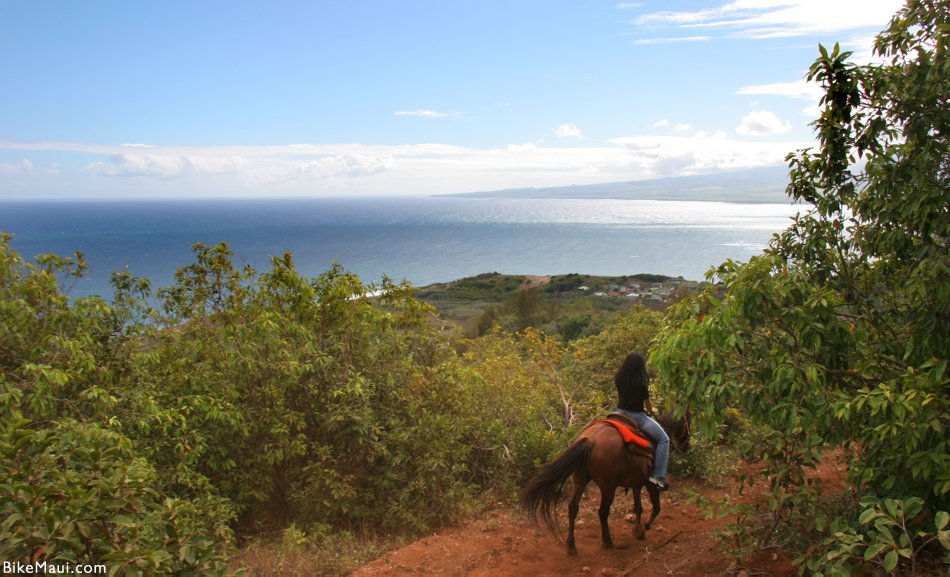
As for the fact that Hawaii’s cowboy culture predates the mainland’s?
Nowhere else is this perhaps more evident than in the awards our paniolo have taken home. Parker Ranch’s own Ikua Purdy waltzed into the Frontier Days Celebration in Cheyenne, Wyoming in 1908—dressed in vaquero-inspired chaps and a hat adorned with a lei—only to win the world steer-roping contest in a mere 56 seconds. Meanwhile, Archie Ka’au’a and Eben “Rawhide Ben” Low—who also hailed from Hawaii—placed second and sixth, respectively. And in 1999, Purdy was voted into the National Rodeo Cowboy Hall of Fame, ultimately going down as the first Hawaiian ever to be nominated. Today, a bronze statue of him glistens in the Waimea sunshine on the Big Island.
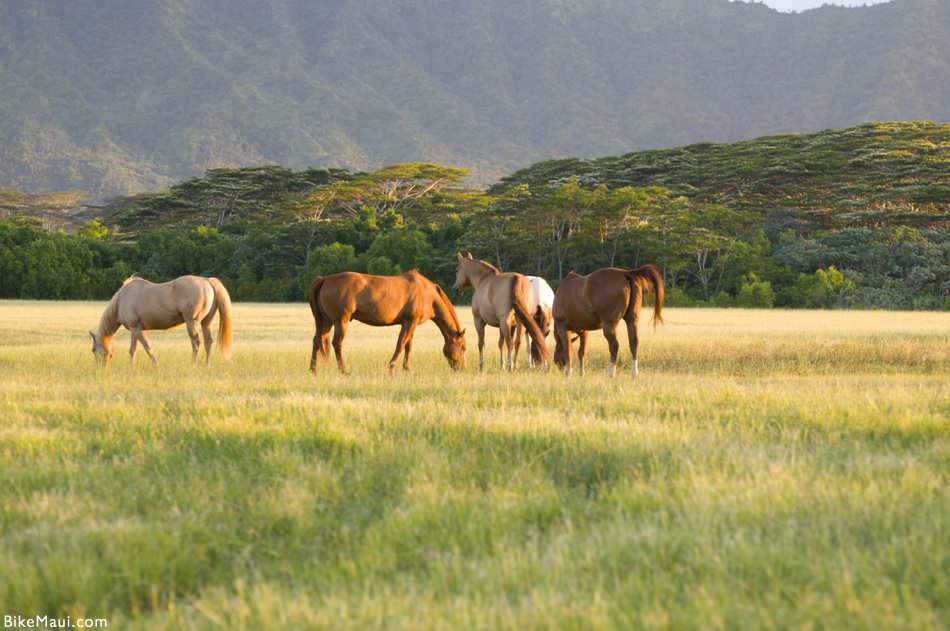
“So many things have disappeared from the islands in a generation,” Hale laments, “certain small native birds, lobsters in the coral reefs, Japanese fishermen who throw their nets at dawn, sugarcane fields, and the thrice-a-day mill whistle, the manapua truck.” The paniolo, however, endure—whether it’s on the slopes of Haleakala, the unpredictable lava terrain on the Big Island, or along the Maha’ulepo shoreline on Kauai. “In place of the feral cattle, purebred, domestic cattle now graze in smaller, fenced pastures,” Thomas Michael Carpenter writes in “Hawaii’s Cowboy Tradition.” “Fewer ranchers employ paniolo, just as on the mainland, fewer ranchers employ fewer cowboys. Yet…as long as there are those who savor a good rib-eye steak, then there will be people who work the land, who tend to the cattle and who sustain the tradition and culture of their world. There will always be the paniolo.” To which we say, gracias. Or, rather, mahalo.
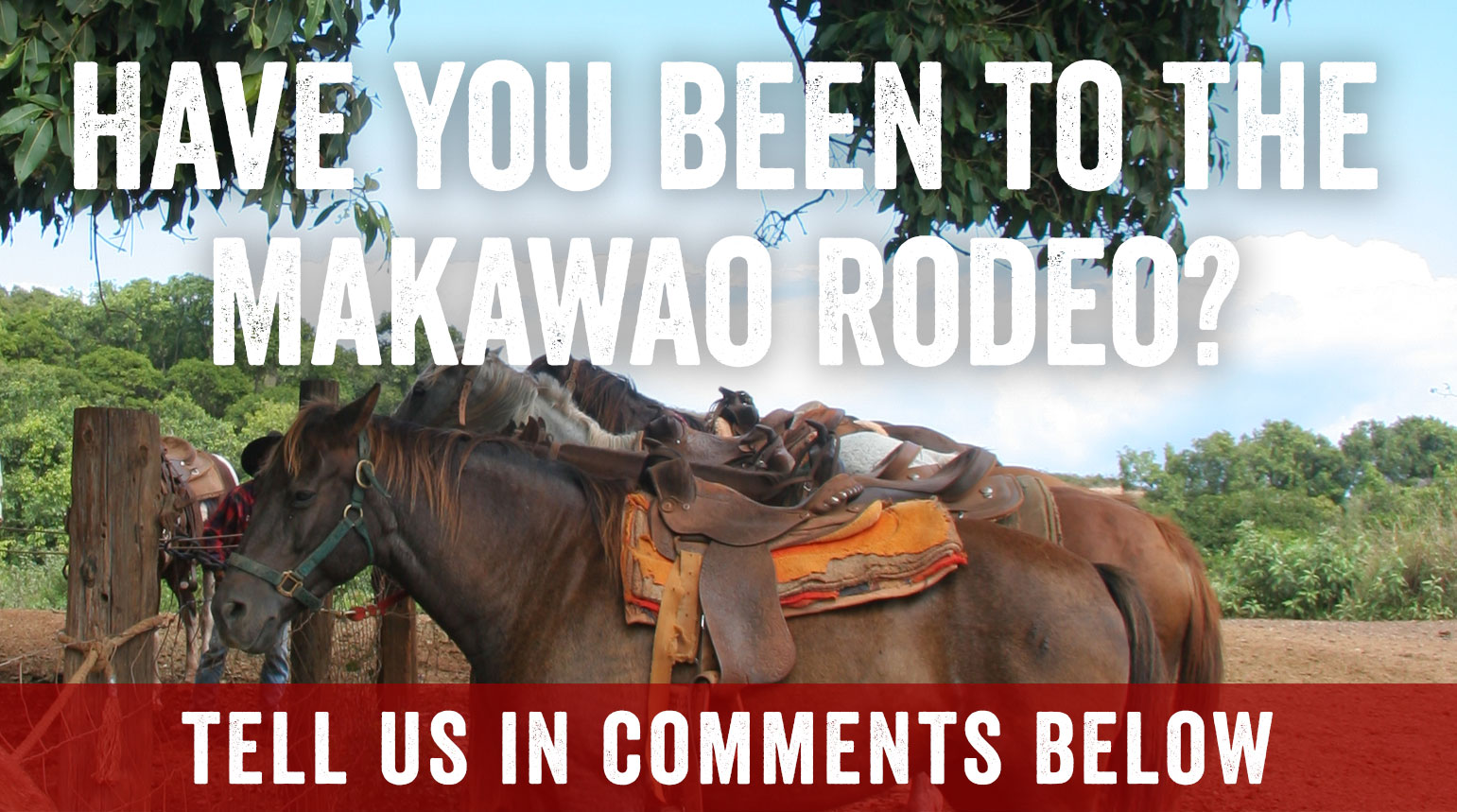
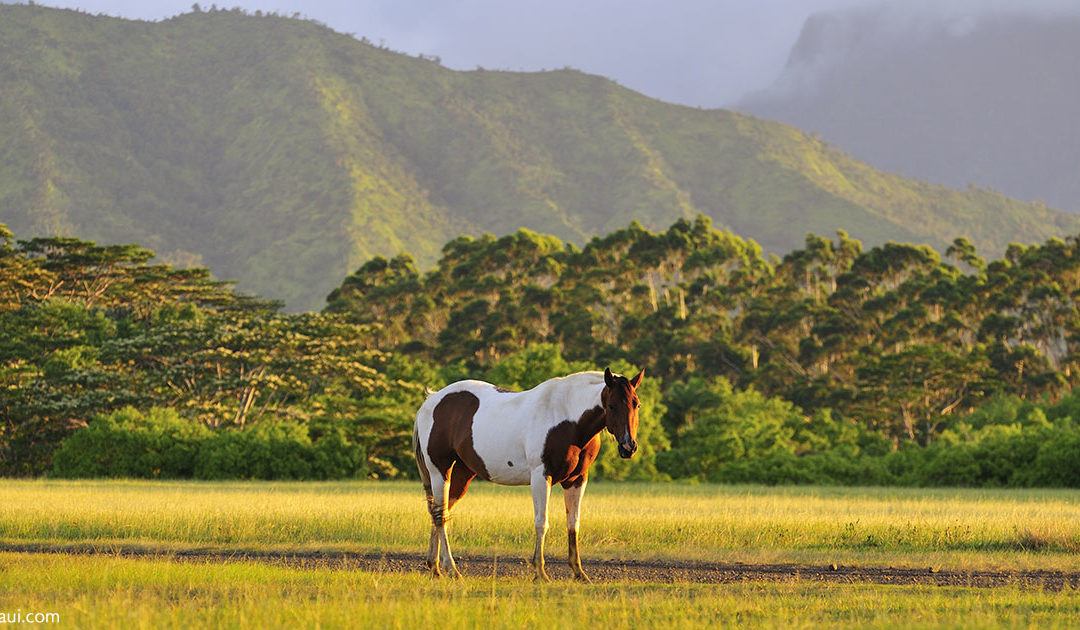
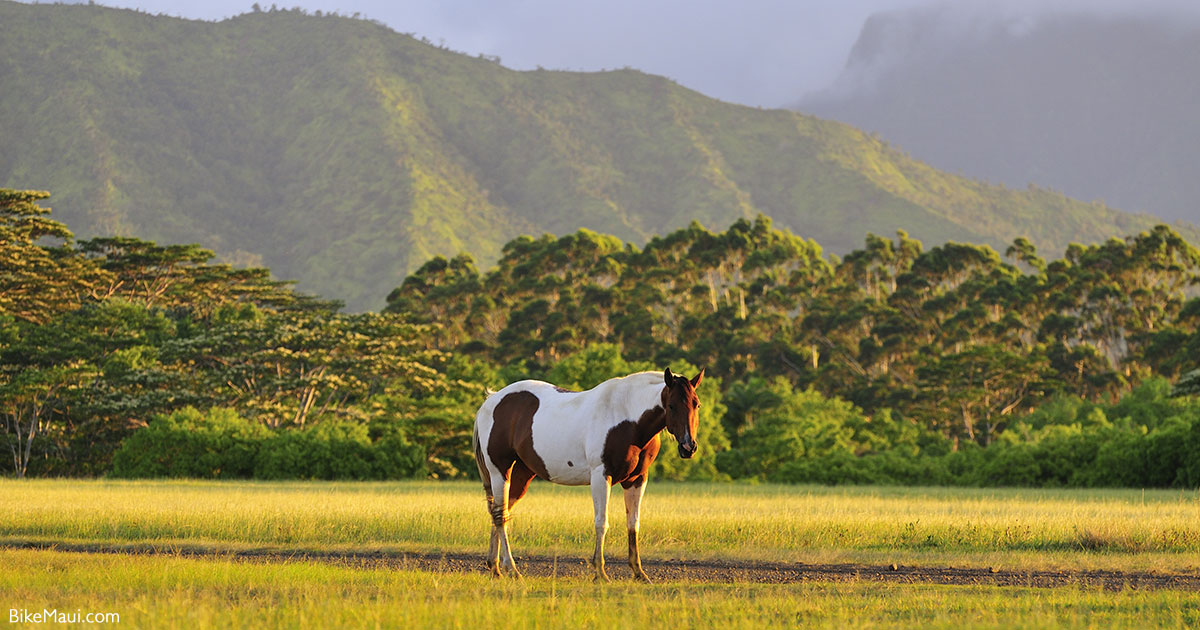

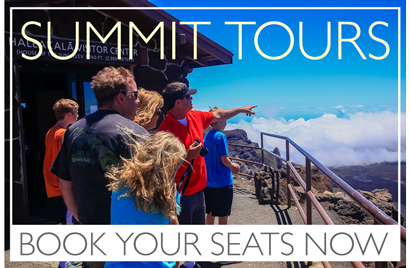

Great story. Thanks for sharing it with us.
This is a true statement, mexicans vaqueros, very skilled in cattle management were the responsibles in taking care of cattle in hawaii. Very proud as mexican to know that mexicans we have a part in history in Hawaii.
Wow, one of the most insightful articles I’ve ever come across regarding the rich Paniolo history. Very well written. There is so much more to Maui than its world-class beaches, golf courses, and resorts. This will hopefully inspire some to venture Upcountry to learn more.
Loved this story … and love Makaweo – such a cool little town!
Thanks for the historical information. Always wondered where paniolos hailed from. I’m very proud of my Mexican American heritage,and knowing more about the paniolos was really great.
Love it. Have actually been riding at the Parker Ranch. I first hear the story from ‘Bill’ who did some rodeoing but also ran an ATV tour business on the Big Island. Loved those rides along the Kohola coast and the sugar cane fields. Fond memories.
.
….and the musical style known as slack guitar, the unique Hawaiian music, also had it’s roots established with the paniolos who first learned from the Mexican vaqueros and later developed their own sound.
This was a great article!
Great article! I search ‘paniolo’ when my son brought me back a bag of coffee from his Maui vacation that was ‘Paniolo roast’. It triggered a memory of the word that a ‘Friend of Bill’ had taught me as a Hawaiian word he’d learned when he lived there several years. Thanks for all the background/history – super-interesting!
The name Paniolo is not a twist on vaquero. The early vaqueros were Spanish. They called themselves Españolo(s). The Hawaiians, due to their language limitations, could only pronounce paniolo. This is how the name came about.
They were not Spanish because they were not born in Spain, they were born in Alta California, which at that time was part of independent Mexico (1830’s). They were also not white they were mixed bloods and Indians as most vaqueros were black, mulatto, zambo, mestizos, and Indians. The actual Spanish vaqueros, those from Spain, don’t rope, they don don’t do rodeos and their saddles don have horns.
The Spanish migrated to Chili in So America. They were called Huaso who excelled in horsmanship from early age. They settled in Maui at the Ulupalaku Ranch. My gddrandpa was Duenos Santos and they were sent by the king. These Chilians settled in Maui and the Mexican settled in the big Island.
Paniolo culture is beautiful. I live here In Waimea on the big island of Hawaii where it is steeped in panioli tradition and the home.of Imua Purdy, Archie Kaaua and Jack Low. One thing, we still have Manapua trucks. that has not disappeared from our islands. none here on the big island but the other islands still have them.
And you quote Dr.Mills well done !
What an educational and informative article….great to know thaat Hawaiians also have the
“cowboy ” side of it as iinfluenced by the Western culuture. Thank you/mahalo for this awesome article and information…now Iwe know.
My understanding of the Vaqueros from Californio was that they were from Spanish families who colonized in what was then a Spanish colony including Mexico and what was known then as Californio. They were of Spanish origin not Mexican which were a mixture of Native American and Spanish.